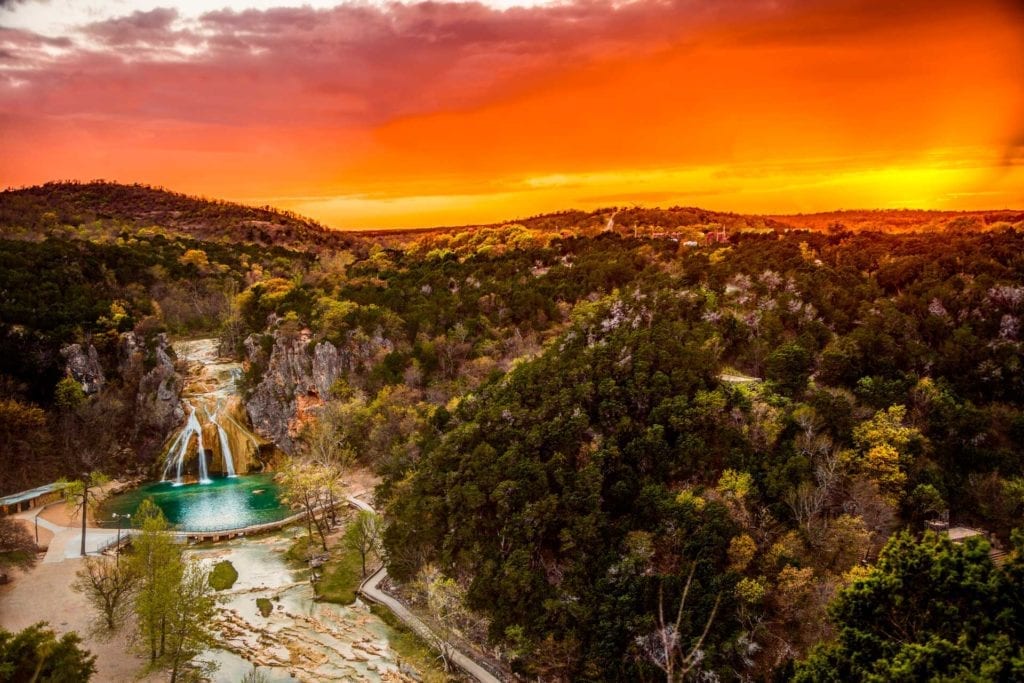Travertine Countertops
Like limestone, travertine is a beautiful but soft natural stone. Its chief advantage is its remarkable texture and beauty. Travertine is pockmarked small holes, troughs and swirls of color that never cease to enchant viewers. The colors are formed by mineralogical impurities in the earth such as iron. When installed, the tiny holes are normally filled with colored grout and the porous surface is sealed to check the intrusions of liquid.
It’s hard to image a prettier stone upon which to rest a coffee cup. But don’t drip. Travertine is not for the sloppy. Spilled liquids such as vinegar, coffee, wine or juice (which are all acidic) must be wiped up immediately to prevent them from staining or etching the surface. Travertine can also be scratched by metal pots, pans, utensils and Iron Age swords so many people consider it to be a poor choice for high-traffic areas.

This Storm Travertine slab shows why the Romans selected travertine for their most beautiful and impressive structures, some of which stand among the Great Wonders of the Ancient World.
Hail Caesar
But that doesn’t mean Travertine isn’t durable. To put things in perspective, travertine was the favorite building material of the ancient Romans. The Coliseum, aqueducts and other Roman structures are built almost entirely of travertine and are more than 2,000 years old! If it was good enough for the entire Roman civilization, its probably good enough for your kitchen or bathroom as long as you don’t allow too many Gladiators in there.
Jubilee Company provides travertine in a number of stunning colors ranging from warm grays, to ivory, cream, beige, walnut, gold and coral red.

This view of Jubilee Company’s Storm Travertine highlights the dramatic patterns and striking colors that make travertine such a bold beauty.
How Travertine is Formed
Travertine is a type of limestone made of calcium carbonate. Pressurized spring waters flowing underground dissolve limestone strata (producing caverns in the process). As a result, the water becomes saturated with calcium carbonate. This kind of water also contains high levels of carbon dioxide (Perrier anyone?) which enables the water to absorb even more calcium carbonate.
When the sparkling spring water flows out of the ground it releases some of its pressurized carbon dioxide which causes its calcium carbonate to precipitate out of the water, coating the bottom and sides of the stream bed. Waterfalls aerate the water even more — like dropping your bottle of Perrier on the floor — to release more carbon dioxide which in turn releases more calcium carbonate. Over time, the stone below the waterfall accumulates a thick coating of beautiful travertine.
But please, don’t let any of this stop you from enjoying a cold bottle of Perrier. We are pretty sure it won’t coat your teeth with travertine. But if it does, just drink more and one day you might have enough travertine to make your own kitchen countertop!
Where does Travertine come from?
Travertine precipitation is catalyzed by other things including normal evaporation and photosynthesis (as by algae in the water, since algae removes carbon dioxide). Thus there are many factors leading to the deposition of calcium carbonate to form large amounts of travertine over time. There are large deposits of travertine in Italy, Turkey, Iran, Mexico and Peru. Smaller amounts can be found in a number of places here in the USA — including one that’s just minutes away from your own backyard.
Travertine Waterfalls
A spectacular example of natural travertine formation can be found less than an hour’s drive from Jubilee Company’s front door. Turner Falls (just over the border in Oklahoma) is a natural travertine waterfall (and auspicious swimming hole) that attracts thousands of visitors every year.
At 77 feet, Turner Falls is the tallest waterfall in Oklahoma. Powered by water from Honey Creek, this spring-fed tributary absorbs calcium carbonate by flowing through limestone formations underground. Evaporation along the edges of the creek creates miles of travertine shelves at the water’s edge. Smaller-scale waterfalls throughout the area repeat the travertine-formation effect. Stalactites and stalagmites in caverns are also formed from travertine.


Advantages
- Uncommonly beautiful
- Durable, eco-friendly material
- Creates a vintage look
- Excellent in low-traffic areas
- Suitable for countertops, backsplash, fireplace surrounds and showers
- Excellent light reflectance
- Cheaper than other stone slabs
Disadvantages
- Beverages must sit on coasters
- Acids can stain or etch porous surface
- Must be filled and sealed
- Easily scratched
- Must be shielded from intense direct heat
Showroom
12,000 sq ft showroom (MAP) a design laboratory where you can cement your architectural ideas
Testimonials
Hear from our clients on how we helped bring their vision to life.
For a Free Estimate
Jubilee Company fabricates and installs beautiful quartzite countertops in DFW. We stock, mill, and install custom all varieties of natural stone kitchen countertops. If you’re remodeling, renovating, or building a custom home we offer one of the largest selections of on-site slab inventories for DFW residents with hundreds of slabs in more than 70 varieties of natural and engineered stone to choose from. Our fabricator-direct advantage includes installation by highly-skilled professionals.
